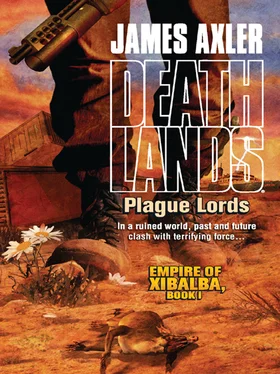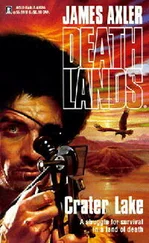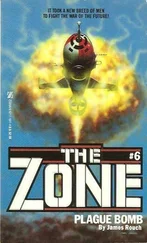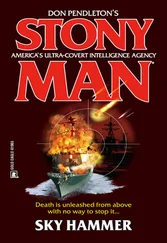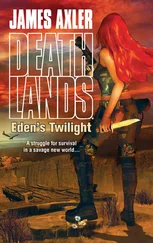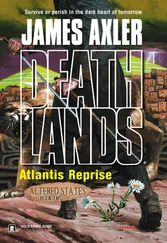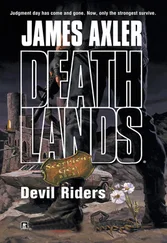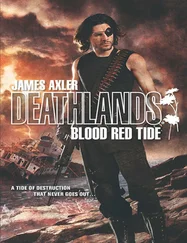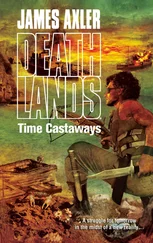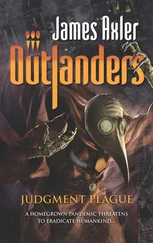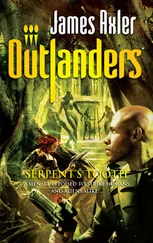The Armorer ejected a live shell from his scattergun. He handed it to the kid, who checked the primer and shook the shell next to his grimy ear. His eyes lit up and he smiled gaptoothed at his mama.
“Go on,” she said, gesturing with the flash hider and ramp sight of the battered AK.
The companions took turns at the bucket, drinking their fill. The water was sweet, cool and fairly clean.
When they were done, Krysty said to Mama, “We paid you for the water, now what do we owe you for the air?”
At a signal from their mother, the kids kicked over the rest of the bucket on the ground. That was followed by a caustic stream of profanity and death threats from the tiny family.
“Friendly town, isn’t it?” Mildred remarked as they carefully backed away and continued on.
“Make no mistake about it,” Ryan said, his voice deadly cold, “this isn’t your run-of-the-mill hellpit. This is the radblasted end of the line, the last outpost on the Gulf coast before the Dallas-Houston death zone. Folks don’t end up in Port A ville by choice. They end up here because they were driven out of the eastern baronies on account of who they were or what they did. I’m talking about the lowest of low—diseased gaudy sluts, jolt fiends, coldheart robbers and crazy chillers. The traders who come through here specialize in looting the interior’s hotspots, and robbing the scroungers who got there first. They’re used to taking the biggest risks, to chilling first and never asking questions after. Keep your eyes open and your blaster hands free. From now on, we’re triple red.”
After another couple of miles of deserted gridwork streets and sprawling ruination, they came to the intersection of two main roads, and in the near distance, the remains of an enormous predark shopping center. Almost all of its structures lay in piles of fractured concrete. There was no telling what had brought the buildings down: storms from the Gulf, earthquake, flood, demolition. Any or all of it was possible.
The parking lots were covered in layers of dried mud and in places trees grew up through cracks in the asphalt. Visible from a quarter mile away, four huge letters hung crooked on a concrete-block building’s lone surviving wall.
“They sold ‘ears’?” Jak wondered out loud.
“No,” Mildred said. “No, the S must’ve fallen off. It’s Sears.”
Before she could elaborate, Ryan urged them on. “Let’s keep moving,” he said. “We’ve still got some ground to cover.”
Maintaining the 450-yard buffer, he led them over swampy, trash-littered, former backyards and between cinder-block foundations, filled with stagnant, black water, around to the west side of the mall. From this angle, they could see almost all of the complex’s connecting interior corridors and colonnades had collapsed in on themselves. A single big-box store was still standing.
“That’s BoomT’s,” Ryan told the others as he signaled a halt.
The entrance to the three-story building was shielded by a pair of Winnebagos sitting on their rusting wheel rims. A mob of people waited in the heat to pass single file through the gap between the RVs. Some wore heavy backpacks; some stowed their trade goods in homemade wags and dog carts. Those were the small-timers. There was a separate queue for big-time traders—a lineup of horse-drawn carts, motorcycles, pack mules and tethered-human bearers at the back bumper of the Winnebago on the right, along the building’s windowless facade. Everybody stood under the watch of crude blastertowers at the corners of the roof.
As Krysty scanned the setup through minibinocs, she said, “How does the operation work?”
“Small-timers are dealt with by BoomT’s sec men,” Ryan said. “Before they get to go into the building, the sec men put a value on their trade goods. The customers get a chit, which they can use for any of the goods inside up to the amount of the chit. Inside there’s a drop-off area for newly bartered stuff. Folks find what they’re after and hand back the chit. The exit’s on the south end of the building. Can’t see it from here.”
Krysty passed the binocs to Mildred, who had a look-see and said, “Who’s the fat man coming out of the Winnie on the right? He’s as big as a Sumo wrestler and it looks like he’s wearing a chenille bedspread. Good God, look at that flab!” She tried to give Ryan the binocs.
The one-eyed man waved her off. He didn’t need magnification to identify the man lumbering onto the tarmac. “That would be BoomT in the flesh,” he told the others. “He handles the major trades and shipping deals himself.”
“What are all those pinkish blotches on his arms and back?” Mildred asked as she took another look through the binocs. “He seems to have a skin condition.”
“Yeah, from bullets,” J.B. answered. “Those are wound scars. Definitely a hard man to chill.”
“A lot of folks have tried to put BoomT in the ground,” Ryan said. “He’s put them all there instead. It’s the flab that protects him, that and all the muscle underneath. He’s one powerful son of a bitch, and he’s a lot faster than he looks. Rumor has it, he can snap a grown man’s neck with either hand.”
“Need a dead-center hit with an RPG to take out that giant tub of guts,” J.B. added.
“BoomT opened up shop about fifteen years ago,” Ryan went on, “after scroungers started going into the hot zones to the north and west to look for spoils.”
“By ‘spoils,’ I take it you are referring to undiscovered caches of predark manufactured goods?” Doc said as he accepted the binocs from Mildred.
“Correct,” Ryan said.
More than a century after the Apocalypse, there was still no large-scale manufacturing in the Deathlands. The necessary machines, the understanding of engineering and assembly-line processes had all gone extinct, along with democracy, the forty-hour work week and cable TV. In actuality, nuclear Armageddon had turned back America’s clock more than two hundred years, to before the Industrial Revolution. The United States of America had devolved into a feudal, agarian and hunter-gatherer society.
“Trader never trusted BoomT,” J.B. said.
“He had good reason,” Ryan said. “Big Boy over there is a double-dealing, backstabbing mountain of crap. And we don’t have enough ammo left to defend our booty. If we take more spoils with us than we’re willing to lose, chances are we’ll lose everything and get ourselves chilled in the bargain.”
“So, we’ve got to hide most of the C-4?” Mildred said. “Where?”
“I know a good place farther south,” Ryan said, waving on the companions.
Circling wide around the south end of the mall, through the shimmering waves of heat they could see a pair of four-mule carts crawling for the line of moored sailboats at the water’s edge. The heavily laden wags rolled on scavenged auto axles and wheels down the cracked and granularized street.
Between the mall and the distant water was a wide expanse of rolling, undeveloped land. There were stands of mature trees; some bare-limbed and dead, some living. Among the twists and turns of the landscape stood patches of irrigated fields that were bordered by little clusters of field-hand shanties.
“From the lay of it, I’d say it used to be a golf course,” Mildred said.
It was a golf course no more.
It had become the breadbasket for Port A ville and vicinity.
Local folk had abandoned the city streets in favor of the open space. The soil there was unpolluted, and there were no wrecked buildings that had to be cleared before it could be cultivated. The former Babe Zaharias Memorial Golf Course was, in fact, the path of least resistance.
Ryan led the companions across the mule-cart route, past the imploded shell of the former links’ clubhouse, and onto what had once been a lush and rolling green. The farm fields on either side weren’t fenced. No field hands were in evidence. With the sun straight overhead, it was too hot to do grunt work. No heads appeared in the doorless doorways or glassless windows of the huts, either. If the laborers were inside, they were dozing soundly through the suffocating heat.
Читать дальше
